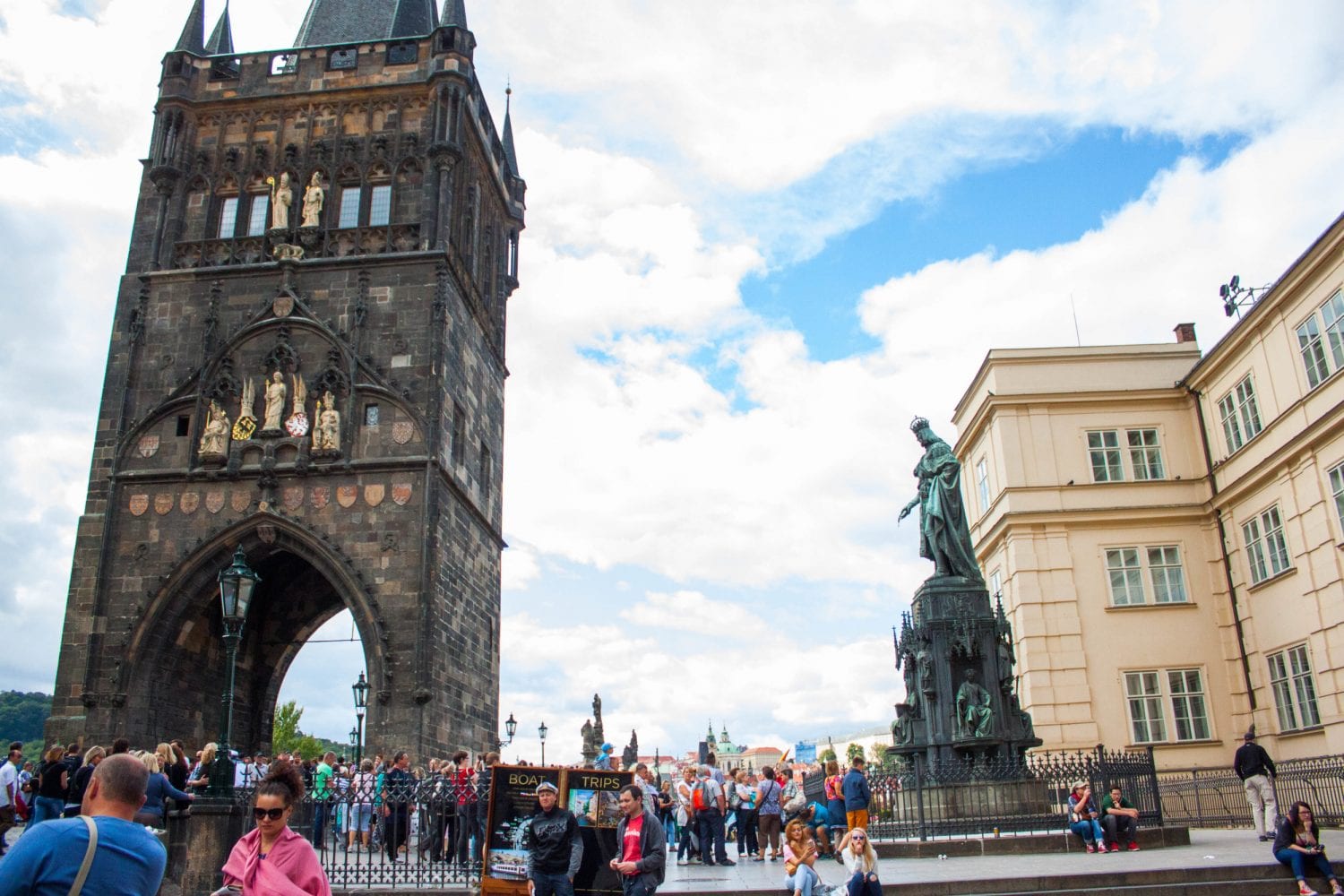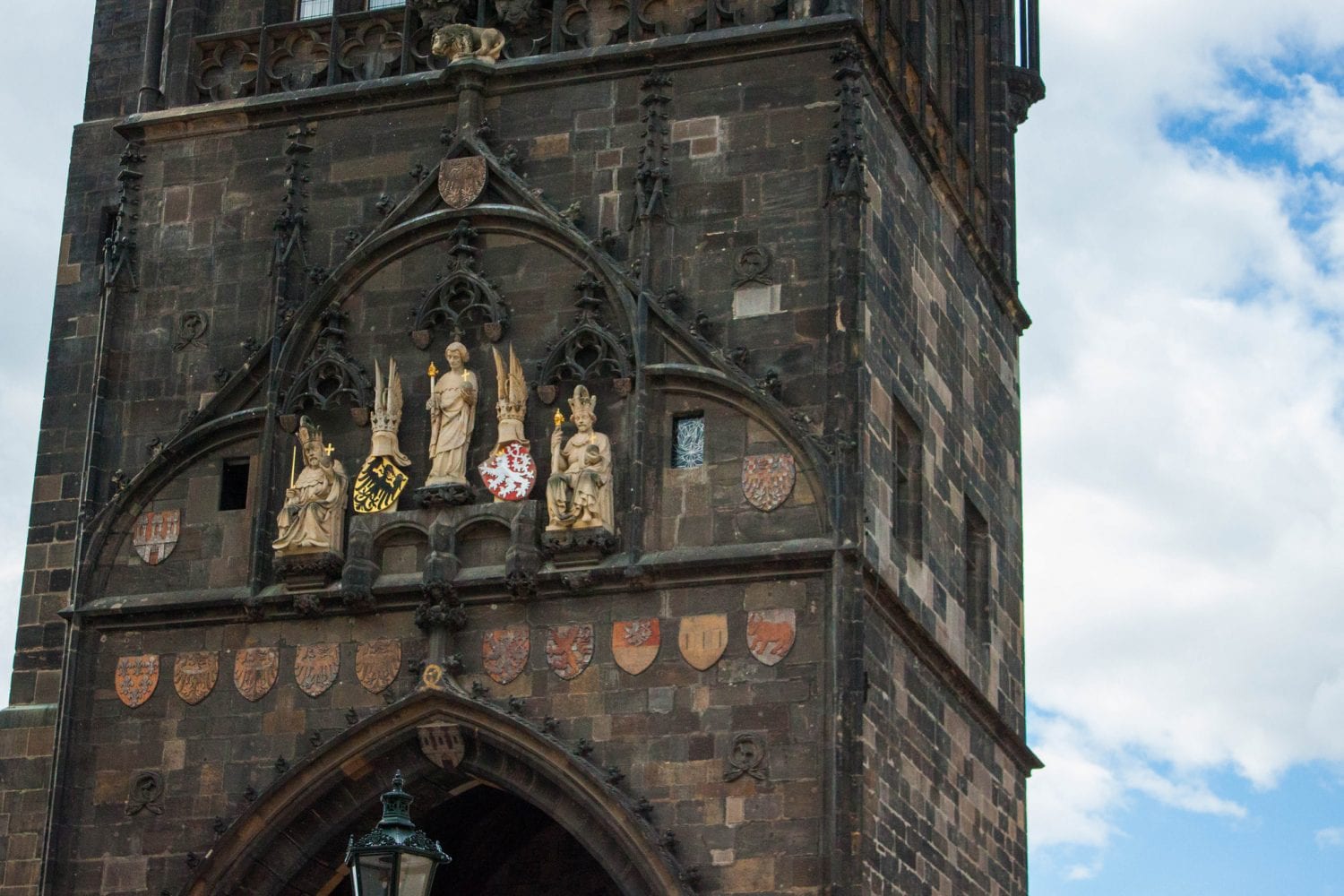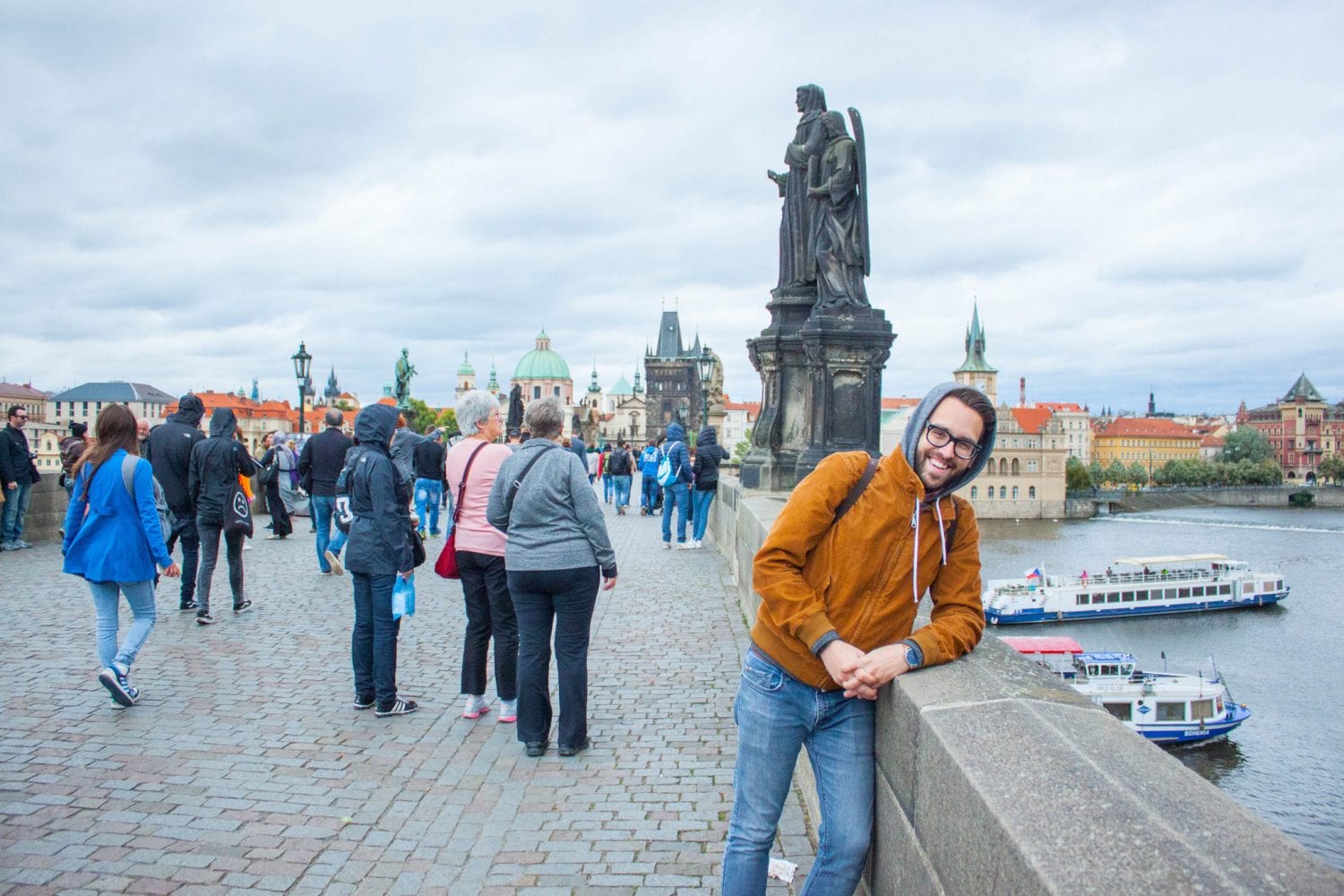After seeing the chaos on the Charles Bridge in the afternoon on the first day we were in Prague, I was anxious and apprehensive of walking across it. Our lovely tour guide was fantastic in taking into consideration our hesitation of large crowds and managed to take us there on an ideal time of day. Although it was still busy on, it was nothing compared to the afternoon crush we’d seen on the bridge before.


The bridge was constructed in 1357 under the watchful eye of King Charles IV. The old bridge which connected the two parts of the city, built in 1158, was more than due for some repairs. It was severely damaged in a flood in 1342 which lead to its demolition and the construction of the new Charles Bridge, named after the King. The reason this bridge was always so important was that it connected the castle past of town to the city’s old town.


Before you step onto the bridge, you must pass through the Old Bridge Tower Gate. The gate welcomes passersby, with a small inscription, into the Little Quarter. The entrance to the bridge is a dark black tower; its old stone stained with age. It was constructed in 1380 as a functional aspect of the bridge, a fortification against invaders. Its Gothic features loom down upon you. Above the archway are several royal crests and resting on top of them are statues of various religious figures, each one holding a shield with heraldry emblazoned upon it.


The bridge is 621 meters long and almost a whopping 10 meters wide! On either side of the bridge are two guard towers, once used for protection, now they only serve as a fascinating decoration for the tourists. Two stand guard on the Little Quarter side and the other one is located on the Old Town Side.
As you walk along the bridge, you come across dozens of statues and statuaries in baroque and gothic styles. They were all once original pieces created in the 16th and 17th century but now are replaced with replicas to keep better in the weather. The statues depict various saints and patrons who were of great importance during the time of its construction.
The most famous figures to keep an eye out for as you’re walking along the bridge are depictions of St. Luthgard, the Holy Crucifix and Calvary, and John of Nepomuk.
Some of the statues are very disturbing and portray the harsh reality of early medieval life in Prague. It would serve as a warning to any illagers passing through to keep on the path of virtue and to frequent the church to repent all their sins.
All along the bridge, people are selling their arts and crafts. There are paintings, magnets, sculptures and more. Many of these people are very strict about tourists taking photos of their works, instead of simply being it. Which, to be fair, I do understand. We stopped at this woman’s glass jewellery stand and found a beautiful and simple pair of earrings I loved. She was so sweet, and I felt great about buying something so kind and dedicated to her craft. We look a little picture, with her permission, of her beautifully manicured booth along the bridge.
All in all, despite the mad crowds that scared me off, I was thrilled to have spent the time walking across the bridge. The views of both old town and the Prague Castle as incredible. Pedestrian brideges like this are few and far between and its understandable that it would be frequented by so many pedetrians. Find the right time of day and you’ll find the bridge less busy and more enjoyable.
Paris has long been a magnet for writers for hundreds of years, with iconic figures…
Paris transforms into a magical wonderland from November to January, bursting with festive charm and…
French cuisine is one of the coziest delights to savour in winter. With its hearty…
During the festive season, Paris becomes a sparkling holiday dream, with twinkling fairy lights cascading…
When it comes to Christmas shopping, Paris is pure magic—a city where elegance meets holiday…
There’s nothing quite like Paris at Christmastime—the City of Light transforms into a glittering wonderland,…
This website uses cookies.